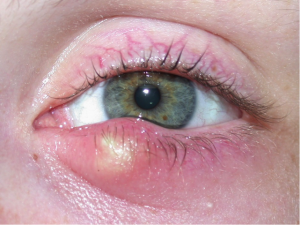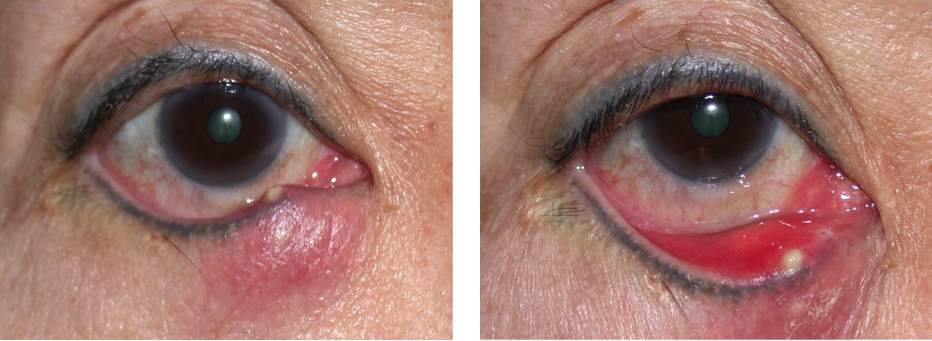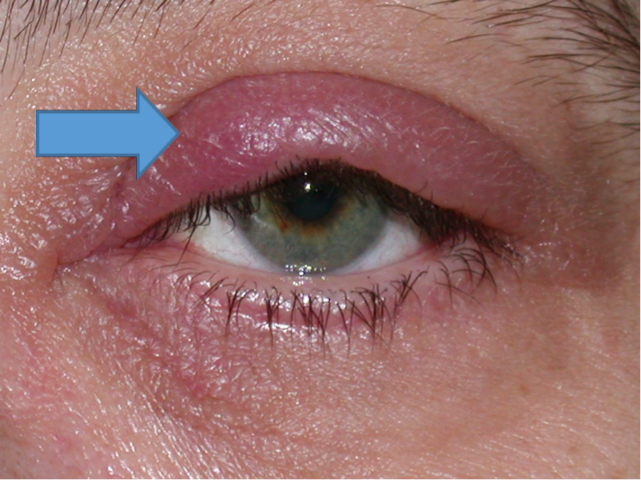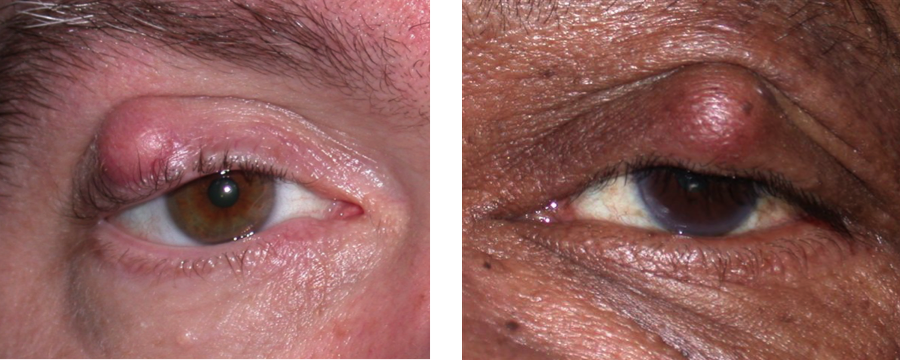
Eyelid Infections
Hordeola (Styes), Chalazia, Cellulitis
The most common eyelid infection is a hordeolum, commonly known as a stye. Styes form when an eyelid oil gland becomes blocked, fills up with secretions, then becomes inflamed and infected. It is similar to a pimple on your face, but the walls are much thicker making styes more difficult to cure. Styes can occur in people of all ages.

Are styes a result of poor hygiene?
Generally not. Styes begin with a blocked oil gland, and once the gland is
blocked it is easily infected by bacteria that is present everywhere. People
that are prone to multiple recurrent styes typically have abnormal oily secretions
that tend to block the glands, causing the styes.
How are styes treated?
Begin with warm compresses (see instructions below). Prescription antibiotic
drops and/or ointments can be applied directly to the stye immediately after
the compresses.

Right lower eyelid hordeolum (stye) affecting the outside and inside of the eyelid.
DO NOT TRY AND SQUEEZE THE STYE LIKE A PIMPLE! It won’t help and it may spread the infection into the eyelid. If the infection has spread beyond the stye an antibiotic pill is usually prescribed.

What is a chalazion?
A chalazion is essentially a blocked eyelid oil gland that is not actively inflamed
or infected. It can be the end result of a stye or may develop without ever
being inflamed or infected. It is treated similar to a stye with warm
compresses, but sometimes a topical ointment with a steroid is used rather than
just an antibiotic. If it does not go away after several weeks of treatment it
can be incised and drained.

Can styes and chalazia be prevented? Washing your eyelids daily with a warm moist wash cloth to remove any excess matter or crust is helpful. Individuals with chronic recurrent styes can be treated with a low dose oral antibiotic that thins oil gland secretions and reduces blocked glands.
How to perform a warm compress:
- Wash and clean your face and eyelids with soap and water.
- Use clean wash clothes soaked in hot water. Do not microwave the wash cloth as it may become too hot and cause a burn.
- Fold the wash cloth into a smaller square and directly apply it to the area of the stye or chalazion for 5-10 minutes, while gently massaging. Alternate 2-3 wash clothes if necessary to maintain a hot cloth on the eyelid throughout.
- Apply the topical medication to the site immediately afterwards as directed by your doctor.
- Repeat 3-5 times throughout the day.
Recent Comments